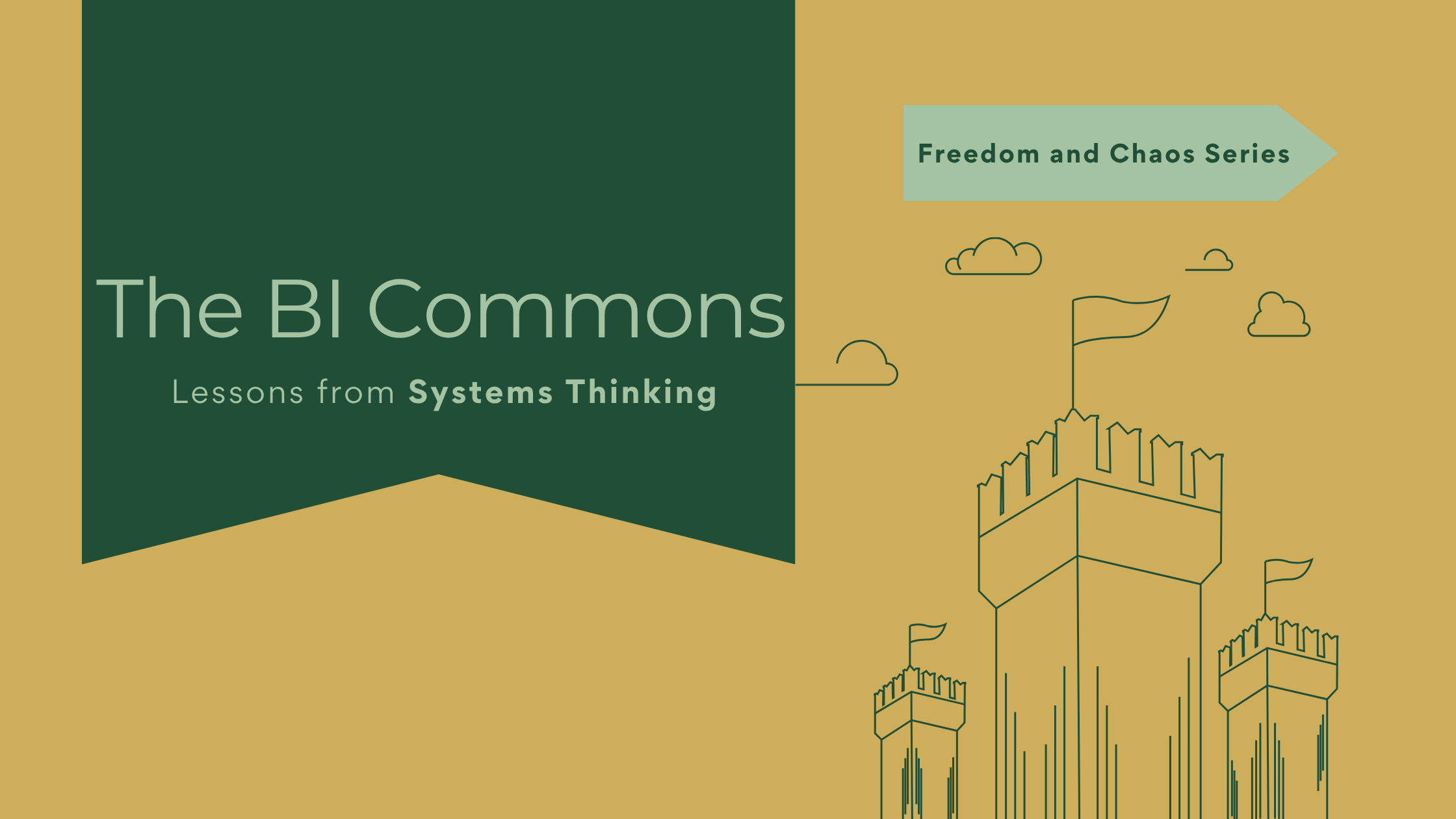The BI Commons: Lessons from Systems Thinking
In business intelligence, freedom is a double-edged sword. Giving everyone the ability to build reports and explore data might lead to powerful insights, but it can also overload systems and create a mess of inconsistent dashboards. In this series, we are looking at how to strike a balance. We aim to preserve the creativity and speed of self-service BI, while avoiding the chaos that comes from having no rules at all.
We’ve already looked at the way even the freest societies depend on boundaries to keep their freedoms sustainable. Here in Part 2, we take that concept into the world of shared Power BI environments. Using the lens of systems thinking, we will explore how shared resources like Premium capacity can be managed so that everyone benefits, without resorting to heavy-handed controls that kill momentum.
On our recent trip to Scotland a few days after the medieval tournament at Linlithgow Palace, we visited another historic site. The kids were playing a game where they pretended each castle was “theirs” and would immediately argue over who got the grand hall and who was stuck in the drafty tower. Watching them squabble over imaginary property-rights made me think about what happens when something is meant to be shared, yet everyone treats it like it is theirs alone. In BI terms, that is your Premium capacity.
Applying Systems Thinking theory to BI image thoughtfully made for Ascendant Analytics
A shared capacity is the corporate version of a public park. Everyone benefits when it is well maintained, and everyone suffers when it is abused. Overuse in BI might not be litter on the grass or broken benches. It might be a dashboard with a dozen unfiltered visuals hammering the model or a report that pulls so much data you can almost hear the server groaning in the background.
The “tragedy of the commons” describes this problem well. In a shared-resource system, individuals acting in their own short-term interest can end up harming the long-term health of the resource for everyone. No analyst wakes up in the morning thinking “I will crash the capacity today.” They are simply focused on delivering something their manager wants, often under time pressure, without realising that their design choices have consequences for others.
This is where systems thinking comes in. Rather than blaming individuals, it asks us to step back and look at the bigger picture. The behaviours we see are shaped by the rules, incentives, and feedback loops in the system. If those are poorly designed or invisible, we should not be surprised when the outcomes are messy.
On our castle visits, I noticed that the well-preserved sites all had clear paths, signs explaining why you could not climb certain walls, and staff ready to answer questions or steer visitors in the right direction. You still had freedom to explore, take photos, and let the kids imagine they were defending the gatehouse. You just did it in a way that preserved the experience for others.
A shared BI environment can work the same way. We can put in clear guidelines for report builders about what types of visuals are costly. We can create templates that make good design the default choice. We can provide performance feedback that helps people see the impact of their reports on the capacity.
Putting Systems Thinking into Practice
Two practical approaches could work well for reinforcing healthy behaviour without turning governance into a bottleneck include:
Make performance visible
Set up a simple dashboard that shows average load times for reports, or highlights the top capacity consumers in a given week. Share it openly within the BI community or in workspace owner meetings. When analysts can see that their report is consistently one of the slowest to load, the feedback is immediate and specific. Naturally prompting them to optimise without anyone having to chase them.
Introduce a “complexity budget”
Give each report page an informal budget, using a points system for different visual types. A card might cost one point, a slicer two, a large table five. Set a maximum point total per page to encourage prioritisation. This turns optimisation into a design decision rather than an afterthought, and helps analysts think in terms of trade-offs: “If I add another matrix, something else has to go.”
These small interventions work because they create visible, ongoing feedback loops. They make the consequences of design choices clear, encourage self-correction, and remove the need for constant top-down policing. Over time, they shape behaviour in the same way clear paths and signs do in a well-managed castle.
The lesson is simple. Freedom in a shared BI environment depends on maintaining the commons. That requires systems designed to align individual effort with collective health. When those systems are in place, the whole organisation benefits. There is more insight, more trust in the platform, and far fewer moments where the BI team feels like it is patching up battle damage.

